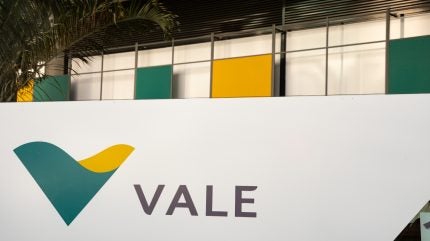
Brazilian miner Vale has reported an increase in iron ore production to 83.6 million tonnes (mt) in the second quarter of 2025 (Q2 2025), a 4% year-on-year (YoY) rise.
This growth was primarily attributed to “strong performance” at the Brucutu mine, following the commissioning of its fourth processing line, and a new quarterly output “record” at the S11D mining project in northern Brazil.

Discover B2B Marketing That Performs
Combine business intelligence and editorial excellence to reach engaged professionals across 36 leading media platforms.
However, pellets production saw a 12% decrease to 7.9mt compared to the previous year, aligning with the revised 2025 production guidance amidst current market conditions.
Iron ore sales also reported a 3% decline to 77.3mt, influenced by Vale’s strategy to prioritise medium-grade products.
In response to the market dynamics, Vale plans to undertake preventive maintenance at the São Luís pelletising plant earlier than scheduled, pausing production in Q3 2025.
The pellet feed originally intended for pelletising will instead be redirected to iron ore fines sales, with the aim of optimising value in the product portfolio.

US Tariffs are shifting - will you react or anticipate?
Don’t let policy changes catch you off guard. Stay proactive with real-time data and expert analysis.
By GlobalDataThe average realised price for iron ore fines dropped to $85.1 per tonne (t), a $5.7/t decrease from the previous quarter, mainly due to lower iron ore reference prices.
Similarly, the average realised pellet price fell by $6.7/t to $134.1/t, reflecting the downward trend in iron ore prices.
Despite these challenges, Vale anticipates production of 325–335mt of iron ore this year.
Vale’s copper production also posted an increase of nearly 18% to approximately 92,600t, the “highest” Q2 output since 2019.
This growth was attributed to higher grades at Brazil’s Sossego mine, nominal capacity at the Salobo Complex and the ramp-up of the Voisey’s Bay Mine Expansion project in Canada.
Copper sales correspondingly rose by 17% to around 89,000t.
Nickel production witnessed a 44% surge, reaching approximately 40,300t, driven by improved performance in Canadian assets and Onça Puma, along with lower planned maintenance activity.
Nickel sales also increased by nearly 20.7% to around 41,400t, the “highest” Q2 production since 2021.
In a statement, the miner said: “In iron ore, the combination of new assets ramping up and greater operational reliability is supporting stronger adherence to the 2025 production plan. Sustained operational improvements at both nickel and copper drove record Q2 output since 2021 and 2019, respectively, reinforcing the upward momentum.”
Last month, Vale said it will stop using water in iron ore processing at its Carajas complex in northern Brazil by 2027.





